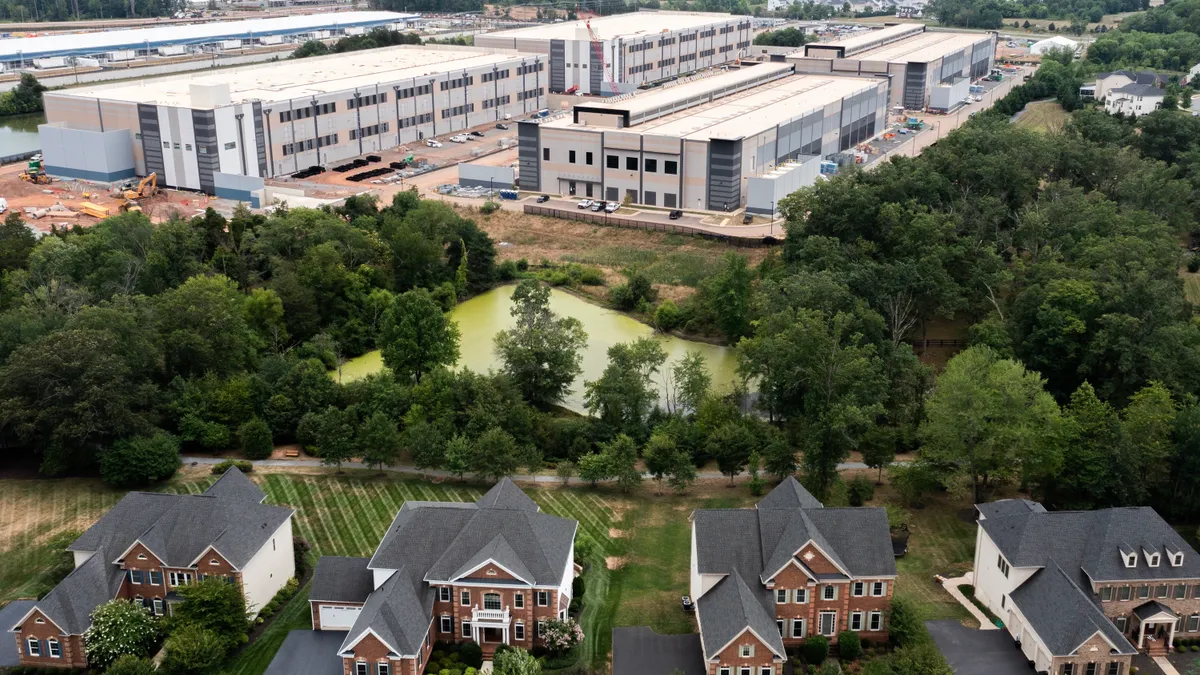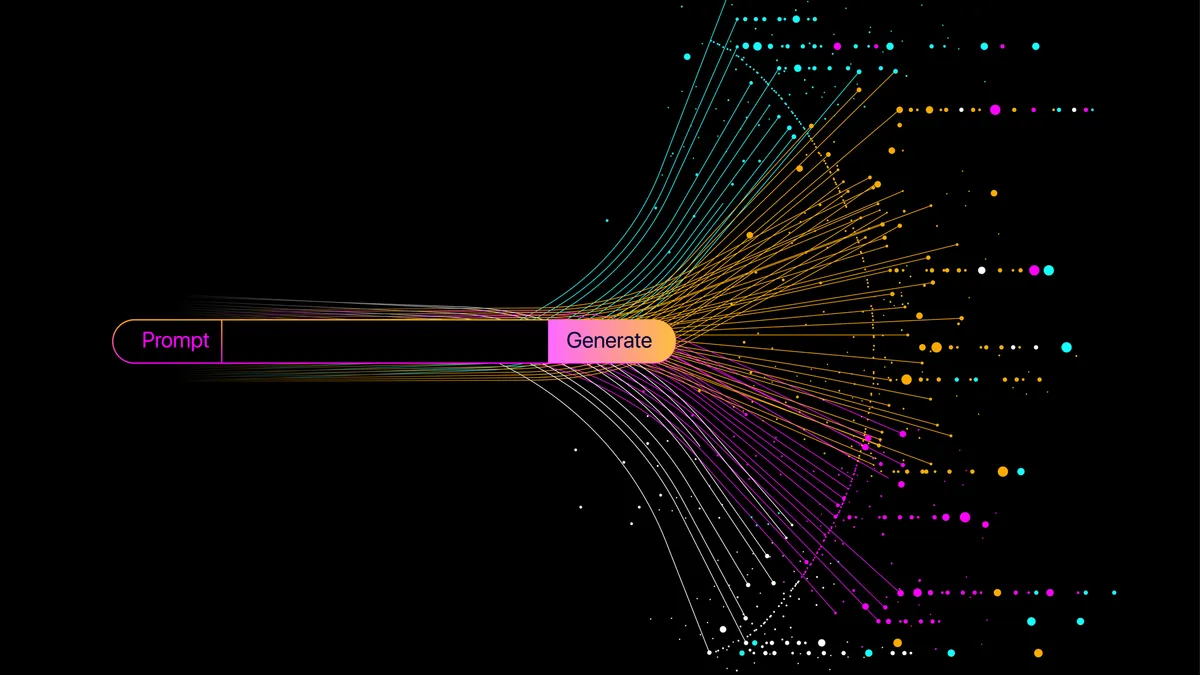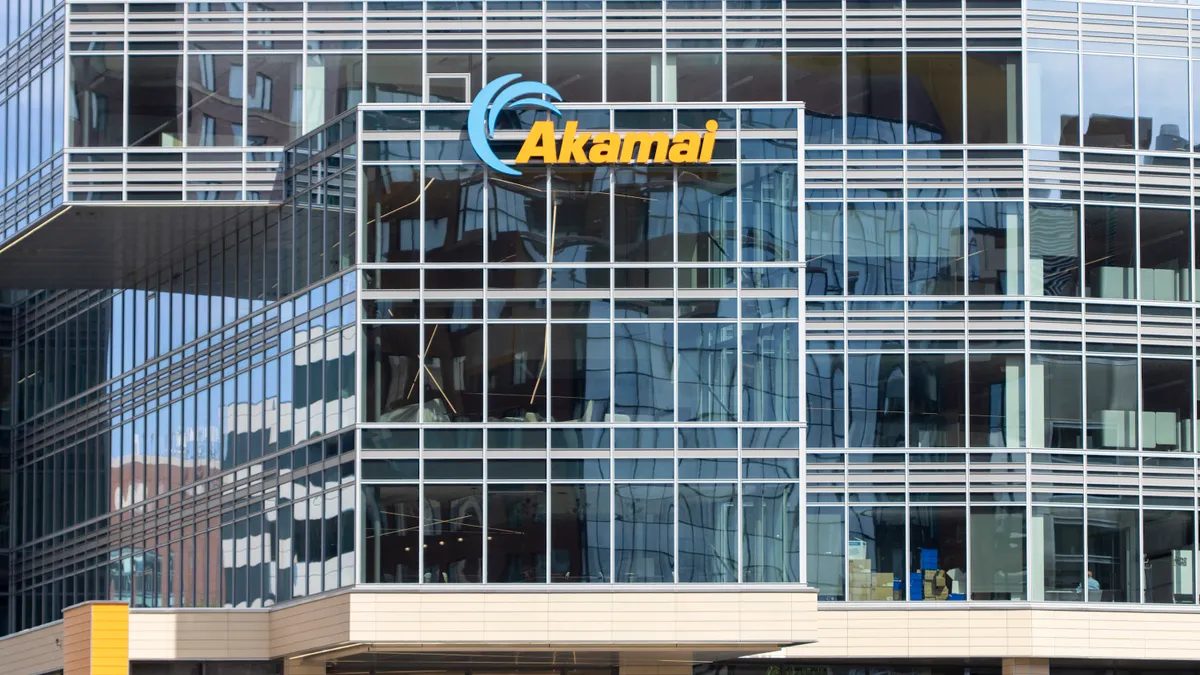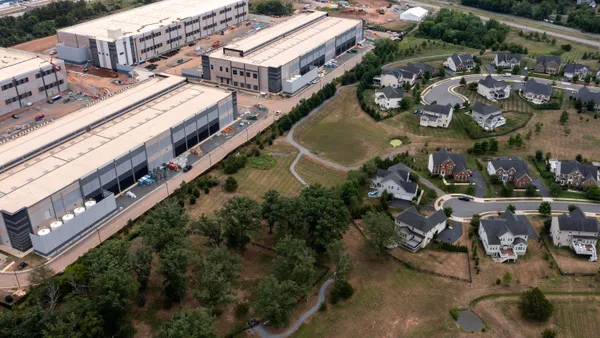Dive Brief:
- Data center vacancy rates in primary markets fell to a historic low of 1.9% during the last half of 2024, according to CBRE research shared with CIO Dive. Only a handful of large facilities in the 2025 pipeline have not been preleased, the firm said.
- Despite record levels of construction, a capacity crunch persisted last year, according to the commercial real estate services firm. Supply in primary data center markets grew an unprecedented 34% year over year, surpassing a hefty 26% increase in 2023.
- Preleasing activity and a lack of currently available space drove up rents across the board. In primary markets, including Northern Virginia, Atlanta, Phoenix and Dallas-Fort Worth, the average monthly rate for a 250-to-500-kilowatt requirement increased 12.6% year-over-year to more than $184, a slowdown compared to the 19% spike that drove the average to $163 during the last six months of 2023.
Dive Insight:
An AI gold rush dominated the data center space last year, swallowing up available capacity and triggering an infrastructure spending spree. AWS, Microsoft and Google Cloud poured tens of billions of dollars into facilities to house hardware for training large language models and powering AI chatbots, copilots and agents.
Analysts expect the technology to continue to shape the IT landscape this year, as the three largest hyperscalers maintain high levels of capital investment in infrastructure.
“The rise of AI workloads is transforming the data center industry, driving unprecedented demand for power-intensive infrastructure,” CBRE said in its report. “AI-related occupiers are increasingly influencing site selection, design and operational requirements.”
Each of the big three cloud providers acknowledged the impact of ongoing capacity constraints on consumption during the final three months of 2024. Projected demand surges have opened the door to larger facilities, according to CBRE. The firm expects 100-plus megawatt data centers to become a new norm this year.
Rising rents and plummeting vacancy rates put all but the biggest enterprises between a rock and a hard place. “It’s difficult to find meaningful amounts of space right now,” Mike Rechtin, partner in DLA Piper’s real estate group, told CIO Dive in December. “You have to look out into the future.”
CBRE is seeing enterprise customers prelease data center facilities 36 or more months before their current contract expires, Gordon Dolven, director of Americas data center research at CBRE, said in an email.
Large companies with expansive AI plans are beginning buildouts now to fill demand that is still years away.
JPMorgan Chase is planning for capacity needs five to 10 years down the line, the bank’s CIO of Infrastructure Platforms Darrin Alves said in January. Companies that wait risk running short on compute, he said.
Availability in Northern Virginia, the largest concentration of data centers in the U.S., fell below 0.5% last year, even as the region saw data center construction more than double year over year. The situation was better in Chicago, which had 3.2% vacancy rate in the second half of last year and a 125% year-over-year buildout spike.
Organizations with larger requirements have an advantage in the tight market.
“Enterprises who can increase their requirements from a megawatt or two to something more meaningful like ten megawatts are going to get noticed,” said Rechtin, who is based in Chicago.
The change, however, has been palpable and severe.
Four years ago, a bank with a five-megawatt requirement in the Chicago area would get a dozen or more responses to an open request for quotes from prospective providers, according to Rechtin. “You hear crickets when you do that now,” he said.














